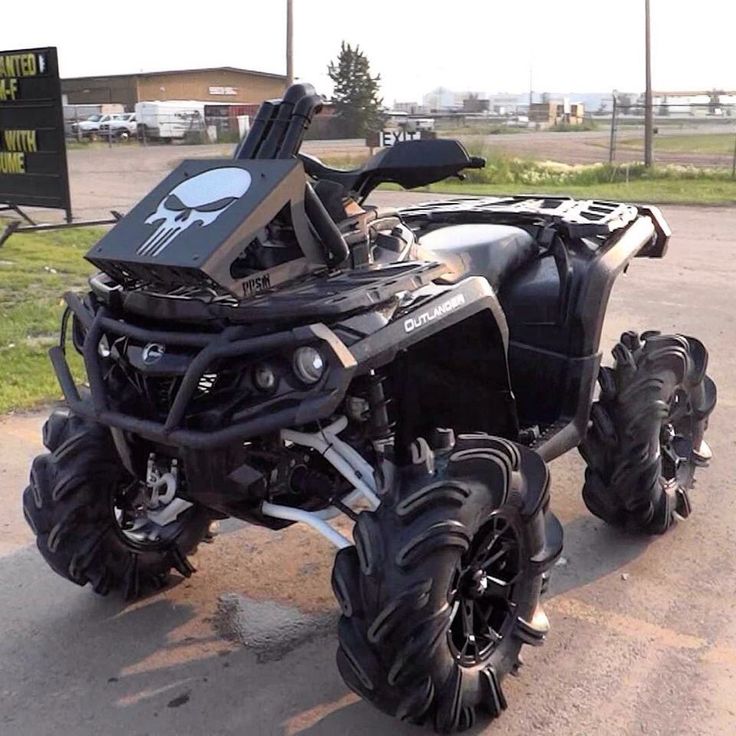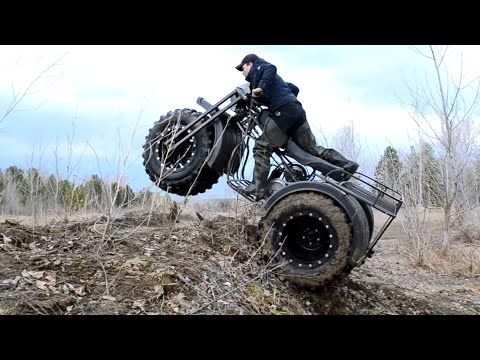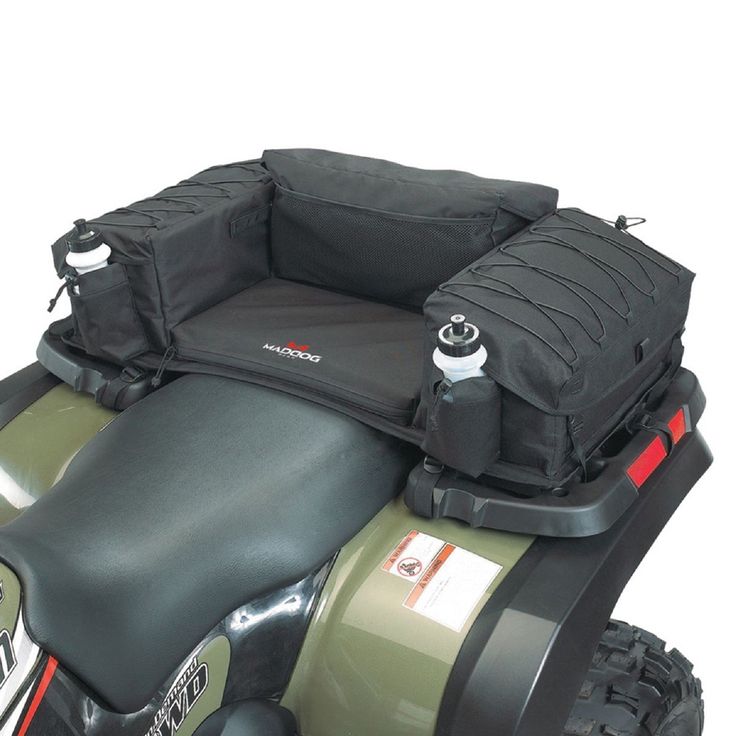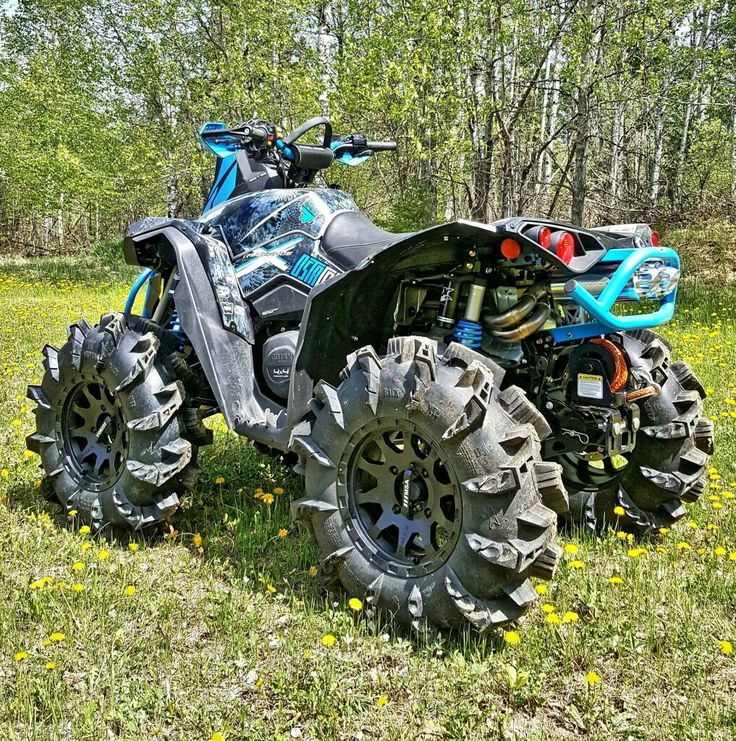atv loading atv tips atv transport step by step guide utv loading utv tips utv transport
Transporting your ATV or UTV can be a pain. One of the easiest ways is to secure it in a truck bed, but it can be challenging to get it on the truck in the first place.
Using a ramp is an easy and quick way to load and unload, but there are still safety precautions you must follow to ensure you and the vehicle are not injured. Here is a step by step guide.
Step 1: Purchase Quality Ramps
Get yourself a set of proper, high-quality loading ramps with added safety features like sidewalls. Your ramps should be rated for the weight of the vehicle plus the driver. Never exceed the weight limit on your ramps.
Step 2: Secure the Ramp
Use tie-down or ratchet straps to secure the ramps to the truck to prevent slipping or sliding when you’re driving up them. Use a separate strap for each ramp, and secure to the truck’s frame.
Step 3: Strap on That Helmet
The slow speed and short distance traveled when loading an ATV may seem innocent, but if something goes wrong, you want your important assets--that big brain and dreamy face--to be protected! Don’t let seeming convenience, peer pressure or your ego get in the way--make sure your help is on and the chin strap is secured.
Step 4: Find the Proper Positioning
Line up the ATV’s wheels with the truck, making sure it is dead straight on.
Step 5: Find the Center Line
Position the ramps so they are lined up with the very center of the ATV’s tires, or as close as possible. If you get them off-center, there is a risk that the ramps will tip and/or you will drive the ATV clean off the side.
Step 6: Pick the Right Gear
Put your ATV into 4LO or whatever the lowest possible gear is. You want low speed, but high power, and if you have four-wheel drive, you want it active.
Step 7: Keep it Firm but Smooth
Apply throttle firmly but smoothly. You want just enough gas for momentum and no more. Absolutely do not back off the throttle while driving up the ramps, as you might slip backwards.
You want just enough gas for momentum and no more. Absolutely do not back off the throttle while driving up the ramps, as you might slip backwards.
Step 8: Practice Slow Creep
Slowly creep the ATV until all four wheels are safely on the truck bed. Once here, gently apply gas until the front of the ATV nearly touches the front of the bed, with a few inches space between the ATV and the front of the bed/cab window. Then shut off the engine, and put in park or apply the parking brake. Do not leave the key in while transporting.
Step 9: Pack It Up
Remove the tie-down straps, remove the ramps and close the tailgate.
Step 10: Secure the ATV
Use strong ratchet straps to secure the ATV to the truck. It helps to have somebody sit on the front and back of the machine while you secure the straps.
Never attempt to load an ATV on a truck on your own. If anything goes wrong, you may need a second person to fix the problem or go for help. Following these simple steps will help to keep the loading process smooth and safe.
Following these simple steps will help to keep the loading process smooth and safe.
For owners of ATVs who need to transport their quad to another location, the most common method is to either use a sufficiently sized pickup truck bed or to load the ATV into a trailer.
Of course, for the transportation process to go safely and smoothly, one must understand how to safely load the ATV first so it is secure during transportation.
Here’s a quick overview of the process of loading an ATV into a truck bed or trailer.
7' 10" Bi-Fold ATV RampThe majority of trailers will either have ramps attached or be low enough to the ground where you can easily purchase and use a small ramp that will allow you to safely load an ATV. But regardless of whether you’re using a trailer or the back of a truck, the most important thing is to make sure you a) have a ramp meant for the job and b) properly secure that ramp in position.
Ramps can be a potential safety hazard if they are not secured properly. If you do not have straps or another method of connecting them to the truck or trailer, they could slip off while you try to load the ATV, which could cause significant damage and injury.
6' 8" Tri-Fold ATV RampOnce your ramp is set up for safe loading, make sure you position the quad so you are lined up straight with the ramps. A crooked alignment with the quad could result in you flying right off the side of the ramps before you’re loaded.
Give it a little distance. Get about five to 10 feet back from the ramps and push the quad forward without turning the wheel. If the quad moves forward straight, you have a good alignment and can proceed.
6' 2" Extra-Wide Tri-Fold ATV RampHere’s the part that requires precision, patience and control.
Although you can load an ATV manually by pushing in up the ramp into your truck or trailer, the fastest way to load it is by carefully riding up at a controlled speed. This is why having your loading ramps completely secured to a metal part of the vehicle's frame is critical - if they aren't properly secured, there's a risk that they'll kick out or slip while you're on the ATV mid-ramp. That spells disaster for your ATV, for you, and possibly for any bystanders who could be hit by any of the fallout.
This is why having your loading ramps completely secured to a metal part of the vehicle's frame is critical - if they aren't properly secured, there's a risk that they'll kick out or slip while you're on the ATV mid-ramp. That spells disaster for your ATV, for you, and possibly for any bystanders who could be hit by any of the fallout.
We always recommend having a spotter when loading any powersport vehicle. Not only is it a good safety practice in the event of a loading accident, they can provide a second set of eyes to make sure that your wheels are properly aligned with the ramps and that you're loading straight.
Although hard to do, keeping the ATV going at a controlled, steady speed up the ramp minimizes the amount of time you're on the ramp, and reduces the risk of something going on. By taking the time up front to set up properly, you can roll right on up and keep the jerky start-stop motion at bay.
Mac's ATV Wheel Nets are a good resource for keeping the quad secure without compressing the suspension.
You’re not done once the ATV is in the trailer or truck bed. The next step is to secure it so it does not move around while being transported.
To accomplish this you’ll need a set of high-quality ratchet straps. Strap the front of the quad around the handlebars and keep the ends hooked in around the front tire inside the truck bed or trailer. This will provide enough forward and downward tension to prevent the ATV from bumping and moving during transportation. The second strap will then pass through the grab bar and down to the rear wheel, where it will provide slight tension down and to the back, preventing the back from bouncing during transportation.
Before you go anywhere, make sure you grab on to the handlebars and give the ATV some pushing and pulling. It shouldn’t move or wiggle at all. If it does, you’ll need to increase the tension and/or potentially add another strap so you can better keep the quad in place.
Follow these steps and you’ll be able to safely transport your ATV wherever and whenever you need without a whole lot of extra equipment necessary!
It is possible to ride an ATV with a child, but in some cases there is an age limit. And preparing for the trip is not as difficult as it seems.
And preparing for the trip is not as difficult as it seems.
We have prepared a guide on how to properly ride an ATV with a child.
If the ATV does not have a vehicle passport, but it is planned to ride somewhere in the forest or just off the highways, there is no law that determines the minimum age of a passenger. Indeed, in this case, the equipment is considered sports equipment, like a bicycle. Therefore, in theory, you can ride with a child of 2-3 years.
But very young children may not enjoy the ride. Most likely, they will be afraid of shaking and turning. Therefore, it is worth taking passengers when they already fully perceive the world, understand the “commands” of the driver and can report on their condition and feelings. That is about 4-5 years old.
That is about 4-5 years old.
If you ride not on your ATV, but on a rented ATV, the company can set the minimum age for passengers.
The parent will have to explain:
If the child is not quite small (10-12 years and older), he can be seated in a regular passenger seat.
It is more difficult with younger children. On the one hand, they can be placed in front of you: this way the child is easier to control, and he will have a better view. But in the event of a frontal impact, you can crush the passenger with your body. Therefore, such a landing is good only if the driver drives as carefully as possible, slowly, and ideally also along a known route without obstacles.
Therefore, such a landing is good only if the driver drives as carefully as possible, slowly, and ideally also along a known route without obstacles.
The second option is to put the child in the back. In terms of safety in case of a possible collision, this is much better. But on the other hand, he will be less able to see the road: in order to see what is happening, he will have to turn his head left and right, since everything in front of him will be obscured by the back of an adult.
The third option is a special child seat. True, manufacturers do not produce such accessories, so you will either have to order it yourself, or buy a child seat for a motorcycle or bicycle and try to fix it on an ATV. In this case, the child will sit higher, and it will be possible to fasten the belts.
The ideal route is explored, uncomplicated, with even ground, without bumps. Well suited forest or field primer. On an unfamiliar road, you can first ride without a child.
Not fast, without sharp acceleration, braking, turns and turns, do not allow the ATV to roll in any direction. If you still need to drive through a section with pits or a slope, you need:
Motorcycle equipment for children from 4 years old can be found on sale. The types are the same as for the "adult" equipment: there are helmets, shoes, gloves, jackets, pants, overalls and protective elements (knee pads, elbow pads, back protection).
Ideally, of course, take a complete set, even for a slow and careful trip. In extreme cases, you can only get by with a helmet. But it is better to supplement the protection with at least gloves and knee pads, as well as closed hard shoes.
But it is better to supplement the protection with at least gloves and knee pads, as well as closed hard shoes.
Riding with a child is not difficult. The main thing is to drive carefully and slowly, choose smooth and calm routes, use equipment and make sure that the passenger is sitting comfortably and can hold on to something. The age limit (12 years) is valid only for ATVs with a vehicle passport.
ATV riding techniques could be the subject of a full book. In the same article, we want to reveal to you the basics of safe riding. At first glance, there is nothing complicated in driving ATVs - you just need to steer and enjoy riding.
When driving over bumps, for example, those of the "wave" type, the driver must change his position all the time. So, when approaching an obstacle, you must shift your body back, otherwise you can hit the obstacle with your wheels. When driving over a bump, you need to move the body back forward, thus preventing excessive separation of the front wheels, i. e. rearing up the ATV. Then, when the rear wheels come off the ground, you need to move back again, otherwise you can fall out of the saddle, hitting your knees on the steering wheel.
e. rearing up the ATV. Then, when the rear wheels come off the ground, you need to move back again, otherwise you can fall out of the saddle, hitting your knees on the steering wheel.
Moving in a straight line at low speeds (up to 40 km/h), you can afford to relax. But at higher speeds or when passing sharp turns and slopes, the driver must move very actively. Indeed, due to the high center of gravity, short wheelbase and small width, ATVs are very prone to rollovers. In addition, if the motorcycle flies separately from the motorcyclist during falls, then the ATV most often covers the driver. Therefore, in order for ATV riding not to end with serious injuries, it is necessary to study the driving rules and strictly follow them.
Indeed, due to the high center of gravity, short wheelbase and small width, ATVs are very prone to rollovers. In addition, if the motorcycle flies separately from the motorcyclist during falls, then the ATV most often covers the driver. Therefore, in order for ATV riding not to end with serious injuries, it is necessary to study the driving rules and strictly follow them.
ATV rider's weight is an important factor that affects machine handling. By shifting their weight, the driver can unload or load the front or rear of the ATV, thus compensating for centrifugal forces.
The first rule you need to learn is that when riding an ATV, you need to relax your arms. When driving, the driver can always let go of his hands, because his legs are holding him in the saddle. As the speed increases, the load on the legs also increases.
Conventionally, three racks are distinguished. The middle stance is used when driving in a straight line without turning. When opening the gas, the body must be moved forward to unload the hands. Thus, the front strut is obtained. When braking and closing the gas, the body, on the contrary, must be moved back, i.e. take a back seat. By the way, the word "stand" comes from the word "stand", and this name is not accidental. When actively riding an ATV, you do not have to sit. Standing on an ATV lowers your center of gravity. After all, there is a huge difference between the weight on a high saddle and the weight on the footrests. And the effect of moving the body in a standing position is much greater than from fidgeting back and forth on the saddle.
When opening the gas, the body must be moved forward to unload the hands. Thus, the front strut is obtained. When braking and closing the gas, the body, on the contrary, must be moved back, i.e. take a back seat. By the way, the word "stand" comes from the word "stand", and this name is not accidental. When actively riding an ATV, you do not have to sit. Standing on an ATV lowers your center of gravity. After all, there is a huge difference between the weight on a high saddle and the weight on the footrests. And the effect of moving the body in a standing position is much greater than from fidgeting back and forth on the saddle.
When going through a turn on a motorcycle, it is tilted inward, thus struggling with centrifugal force. But you can't do that with a quad bike. Therefore, it is necessary to use the weight of the driver. The main rule here is to always transfer the weight inside the turn. Moreover, it is necessary not only to tilt your shoulders. It is necessary to hang the entire body, including the fifth point. Only the shin and knee hold on to the saddle. Of course, if you turn at minimum speed, then you can limit yourself to turning the steering wheel.
It is necessary to hang the entire body, including the fifth point. Only the shin and knee hold on to the saddle. Of course, if you turn at minimum speed, then you can limit yourself to turning the steering wheel.
The correct stance is characterized by slightly bent knees, elbows set apart, and a slightly arched and relaxed back. Why not stand on straight legs or keep your back straight and tense? Because bent knees allow you to absorb shock coming from uneven terrain. By the way, the force of these blows is sometimes quite enough to knock the driver out of the saddle. A straight tense back under such conditions can lead to injury to the intervertebral discs and even a compression fracture of the spine. Yes, and the internal organs with the wrong fit will have a hard time.
Active ATV riding requires good physical shape. So, in quad schools, the duration of the lesson does not exceed an hour, and at the end of the lesson, students can literally be squeezed out. And riding an ATV off-road is also an activity worthy of training in the gym.
And riding an ATV off-road is also an activity worthy of training in the gym.
When riding non-sport ATVs, it is best to avoid jumping. Firstly, this way you can break the ATV. Secondly, in order to safely perform such tricks, the ATV motor must have high-torque and fast response to the throttle. If, nevertheless, the jump could not be avoided, then it is necessary to land in the middle stance, but be ready to move to the back. When the wheels touch the ground, you need to slightly open the gas. It is better not to use four-wheel drive when jumping.
Every time you ride an ATV, you need to practice looking into the distance. This is necessary to develop the habit of evaluating the trajectory of movement in advance. Beginners often do not have time to track the road, and at some point they are not ready to perform adequate actions. And another, very predictable obstacle, can become a problem for them.
| When moving along a slope, it is necessary to move the body in the direction opposite to the slope.
|
Before you start climbing, you need to pick up speed. Then the resulting inertia will allow you to smoothly drive into the steepness. If you suddenly open the gas directly on the rise, the ATV may tip over. Climbing should be in the most forward stance and on medium gas. If the incline is too steep, the ATV may roll backward when the throttle is released. In this case, you should not brake with the front axle, not the rear. If the ATV starts to roll over, you can try to jump to the side, but this acrobatic stunt is unlikely to be successful.